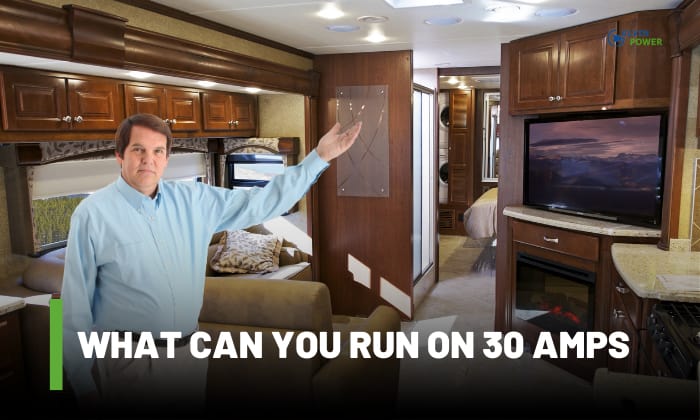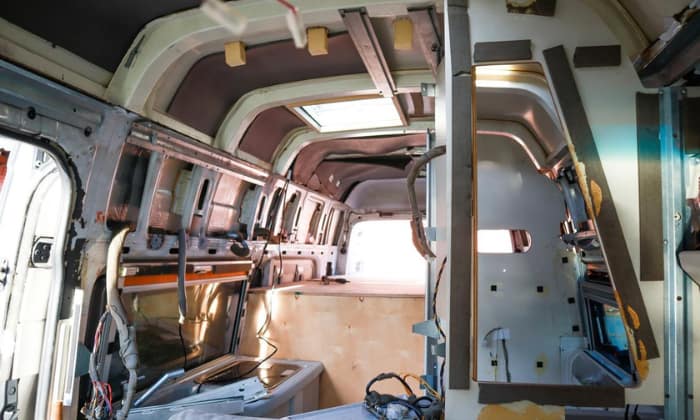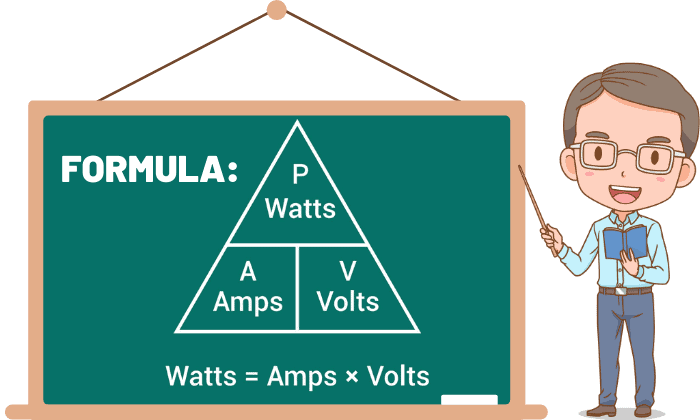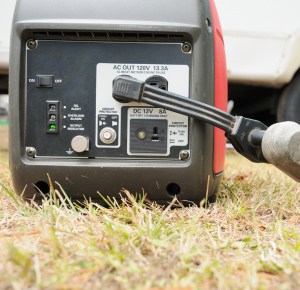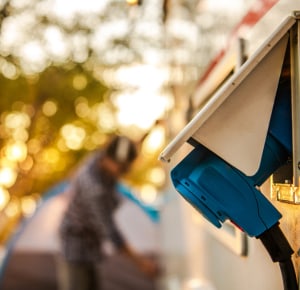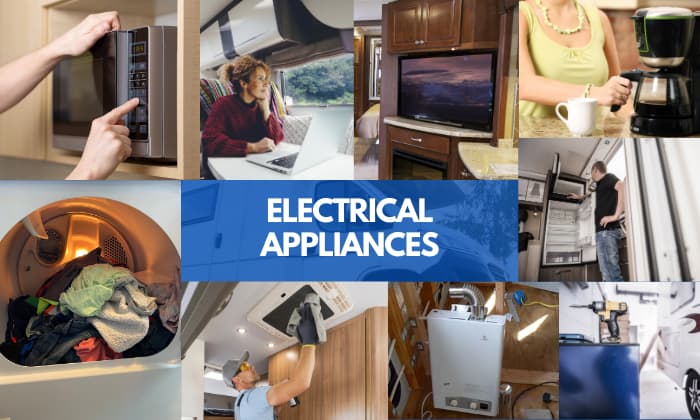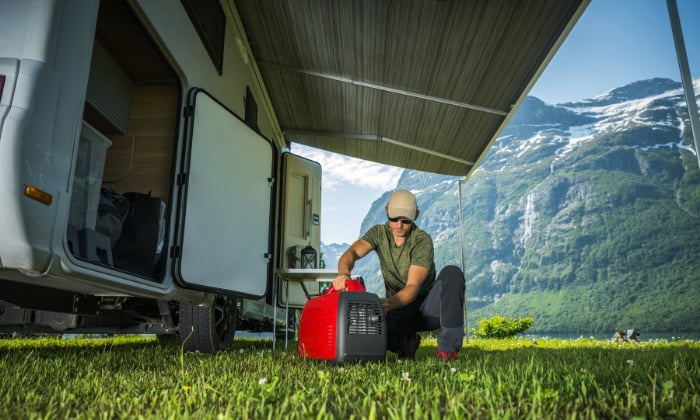Ampere, commonly known as amp, refers to the unit of electrical current. It measures the rate and amount of electric charges that pass through a conductor. Electrical circuits are designed with different amperage based on their intended usage.
Recreational vehicles offer an exciting way to travel the world and stay at campsites, providing a mobile home-away-from-home experience. RVs are equipped with different amenities, from entertainment, air conditioning, kitchen, and bathrooms.
The answers to your question “what can you run on 30 amps?” include electric ovens, clothes dryer, portable air conditioning units, water heaters, power tools, refrigerator, coffee maker, television, laptops, and computers.
Table of Contents
Appliances and Devices Compatible With 30 Amps
Today, most recreational vehicles (RVs) are designed with a 30-amps electrical system. The ratings of an electric circuit indicate the maximum current that can safely pass through it without causing damage to other electrical components.
RVs solely rely on electrical systems which are usually designed around 30-amp service on supplying power to different systems or equipment within the vehicle. In line with this, every RV owner should prioritize his/her electrical needs.
Amps, Volts, and Watts Calculation
To understand better electrical capacity and current, it is essential to identify the relationship between amps, volts, and watts through the formula below:
\[ \text{Power (in watts)} = \text{Current (in amps)} \times \text{Voltage (in volts)} \]
1. Calculating power (watts):
If you already know the current and voltage, it is quite easy to calculate the power consumed or produced in a circuit. Just multiply the current in amps by the voltage in volts.
For example, having a circuit with a current of 10 amps and a voltage at 220 volts will produce or consume an electrical power of 1,200 watts.
\[ (10 \text{ amps}) \times (220 \text{ volts}) = 2,200 \text{ watts} \]
2. Calculating current (amps):
On the one hand, if the power and voltage are already identified, you can calculate the current flowing within a circuit. Simply divide the power in watts by the voltage in volts.
For instance, having a circuit with a power consumption of 600 watts and a voltage of 120 volts will result in 5 amps flowing within the circuit.
\[ \frac{{600 \text{ watts}}}{{120 \text{ volts}}} = 5 \text{ amps} \]
3. Calculating voltage (volts):
To find the voltage, you need to divide the power in watts by the current in amps. For example, if you have an electrical circuit consuming 2,100 watts within a 30 amp rv plug, the voltage in the circuit would be 240 volts.
\[ \frac{{2,100 \text{ watts}}}{{30 \text{ amps}}} = 70 \text{ volts} \]
List of Units Can Run on 30 Amps
A rv 30-amps service is designed to handle a maximum of 30 amperes of electric current which can be calculated through multiplying the total power load (30 amps) by the voltage of the circuit which is usually at 120 volts resulting in a maximum power capacity of 3,600 watts.
Here is the list of common electrical appliances, their power rating and rv amp usage chart to help you on identifying what you can run on a 30-amp circuit.
| Appliance | Watts Needed (Approx.) | Amps (Approx.) |
| Electric Ovens | Typically around 3,000 to 5,000 watts | 15 – 20 amps |
| Clothes Dryer | Typically around 3,000 to 5,000 watts | 7.5 – 30 amps |
| Portable Air Conditioning Units | Typically around 1,200 to 2,500 watts | 10-16 amps |
| Water Heaters | Typically around 2,500 to 4,500 watts | 8-12 amps |
| Power Tools | Typically around 200 to 1,500 watts | 4-12 amps |
| Refrigerator | Typically around 600 to 800 watts | 2-5 amps |
| Coffee Maker | Typically around 800 to 1,200 watts | 8-12 amps |
| Television | Typically around 100 to 400 watts | 2-4 amps |
| Laptop or Computer | Typically around 50 to 200 watts | 1-4 amps |
It is quite significant to note that the above wattage ranges are estimated values and can vary depending on the model and other components of the appliance or device. With this, always refer to their specifications or wattage information.
A 30-amp fuse handle plays a significant role in maintaining the maximum current flow of a 30 amperes system. It protects electrical circuits from excessive and overloaded current.
Lastly, always be mindful of the total power consumption/load when utilizing multiple appliances simultaneously in order to avoid overloading the electrical circuit.
Frequently Asked Questions
What can a 30 amp generator run?
A 30 amp for rv generator can supply electrical power to a range of appliances and devices as long as the total power (watts) is not exceeding to 3,600 watts for 120 volts and 7,200 watts for 240 volts.
What is electrical overload?
An overloaded electrical circuit takes place when the total power exceeds its maximum capacity.
How many watts can 30 amps can handle?
As the formula for power, you need to multiply the current in amps by the voltage in volts. The typical voltage in RVs is 120 volts, then multiply it by 30 amps, resulting in 3,600 watts.
Can I run my RVs AC on 30 amp?
It is possible for a 30-amp to run the AC of a recreational vehicle as long as the specific requirements of the AC unit and its power usage do not exceed the capacity of the rv 30-amp service.
Conclusion
In order to answer the question “What can you run on 30 amps?”, it is quite critical to understand the capabilities of a 30-amp service within recreational vehicles.
On a 30-amp electrical circuit, you can power various appliances and devices, including electric ovens, clothes dryer, portable air-conditioning units, water heaters, power tools, refrigerators, coffee maker, laptops, computers, and more.
By understanding the limitations and effectively managing power consumption, you can ensure safe and efficient exploration with your recreational vehicle while enjoying the convenience of modern living.

I am Edwin Jones, in charge of designing content for Galvinpower. I aspire to use my experiences in marketing to create reliable and necessary information to help our readers. It has been fun to work with Andrew and apply his incredible knowledge to our content.

